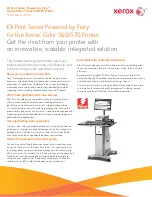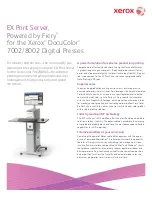
Chapter 2. Architectural and technical overview
45
required the development of a rigorously modular management architecture, which organizes
the management model in the following ways:
Groups together the management of closely related subsets of hardware elements and
logical resources.
Divides the management into multiple layers, with operations of increasing breadth and
scope.
Implements the management layering concepts consistently throughout the distributed
control structures of the system (rather than viewing management as something that is
added on top of the control structures).
Establishes durable interfaces, open interfaces within and between the layers
The Figure 2-7 on page 44 also shows that SCS is divided into management domains or
management levels, as follows:
Management Level 1 domain (ML1): This layer refers to hardware logic and chips present
on the circuit boards (actuators and sensors used to perform node-control operations.
Management Level 2 domain (ML2): This is management of a single subsystem (for
example processor book) or node instance within a system.The ML2 layer controls the
devices of such a subsystem through device interfaces (for example, FSI, PSI) other than
network services. The devices are physical entities attached to the node. Controlling a
node has the following considerations:
– Is limited to strict intra-node scope.
– Is not aware of anything about the existence of a neighbor node.
– Is required to maintain steady-state operation of the node.
– Does not maintain persistent state information.
Management Level 3 domain (ML3): Platform management of a single system instance,
comprises all functions within a system scope. Logical unit is responsible for a system and
controlling all ML2s through network interfaces; acts as state aggregation point for the
super-set of the individual ML2 controller states. Managing a system (local to the system)
requires the following considerations:
– Controls a system.
– Is the service focal point for the system being controlled.
– Aggregates multiple nodes to form a system.
– Exports manageability to management consoles.
– Implements the firewall between corporate intranet and private service network.
– Facilitates persistency for:
•
Firmware code loads.
•
Configuration data.
•
Capturing of error data.
Management Level 4 domain (ML4): Set of functions that can manage multiple systems;
can be located apart from the system to be controlled. (HMC level)
The Power System HMC implements ML4 functionalities.
The relationship between the ML2 layer (NC) and ML3 layer (SC) is such that the ML3 layer’s
function set controls a system, which consists of one or more ML2 layers. The ML3 layer’s
function set exists once per system, while there is one ML2 layer instantiation per node. The
ML2 layer operates under the guidance of the ML3 layer, for example, the ML3 layer is the
Summary of Contents for Power 595
Page 2: ......
Page 120: ...108 IBM Power 595 Technical Overview and Introduction...
Page 182: ...170 IBM Power 595 Technical Overview and Introduction...
Page 186: ...174 IBM Power 595 Technical Overview and Introduction...
Page 187: ......
















































